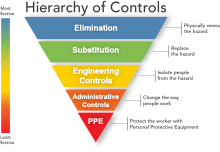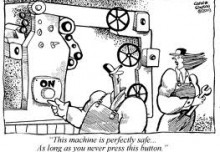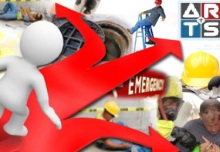 Walking the Floor for Safety
Walking the Floor for Safety
Walking the floor by a manager is a critical part of understanding what is truly going on at your facility. Getting out of the office and onto the floor allows you a firsthand look at how things are going. If a manager only goes out on the floor when there is trouble, then employees will assume, when they see management, there is something wrong. For example, many of our client’s employees believe when they see an HR manager on site, someone is losing their job. Daily walks are also used in programs such as Lean Manufacturing and Six Sigma.
A daily safety walk could be compared to a Gemba Walk which is used to monitor production. A Gemba Walk is a daily, scheduled walk where the manager in a facility is out on the shop floor and publicly reviews the shop’s performance and metrics as displayed on visual metric boards. The manager walks through the shop, stopping at each visual metric board to review the current results. A lower-level manager (or better yet, an hourly associate) presents the data to the manager, who can then praise good performance and ask questions about problems which prevented good performance. The manager can also give direction and suggestions to the operating associates.
The Gemba Walk is a proactive, non-threatening and quick process. The total time spent at any one visual metric board should not exceed 15 minutes and typically should not be more than 5 – 10 minutes. If there are issues that need further discussion and review, then other, more traditional systems such as production meetings should be used.
You can use this same “Gemba Walk” approach to safety. Walking the floor for a short time to focus on safety will give the manager a “hands on, proactive” approach. Gemba Walks are often done in a “layered” manner. At the lowest layer, the Department Manager does a daily walk, the Site-wide Operations Manager would do a weekly walk, and the Division Leader would follow the same Gemba Walk process monthly. Reports on the walks can be submitted and shared with employees at monthly safety meetings. Managers can be given different topics to focus on or talk about with employees. Topics may include behavior based safety or regulatory topics such as Lockout Tagout. Asking employees open ended questions is a great way to get conversations started.
Whether for production metrics or safety, Gemba Walk reviews are done publicly. Everybody sees that operations are measured and all levels of management are interested in the results of those measures. Anyone may ask a question or offer information. The only caveat is that the total time at any one station should not exceed 15 minutes. No matter who is present, a Gemba Walk is not meant to be long and drawn out.
Here is an example where walking the floor was beneficial in preventing future injuries.
I was walking the floor at my steel fabrication facility. As the Safety manager, I walk the floor several times a day. On this particular day, I was walking the afternoon shift. This facility had work cells where employees would work on fabricating and assembling large pieces of steel. As I was walking, I would observe employees working, check on regulatory items and stop to chat with employees. As I was getting ready to proceed to another building, I heard something and out of the corner of my eye I noticed something flying through the air. I turned to see what was going on, I saw a 2 lb hammer had broken and two parts were flying in opposite directions. The employee looked around to see if anyone noticed. He saw me and knew that I had seen the incident. I looked at the employee who nodded in acknowledging that we were about to have a discussion.
When I got to the employees work station, I could see the 2 lb hammer was broken where the hammer handle attaches to the steel head. The employee was embarrassed however he was not apprehensive to speak with me because he sees me often. I asked the employee what happened. He said he was trying to line up a piece of steel so he could weld it to another piece. He said he used the hammer to “persuade” one piece of metal into the correct position. We continued to talk about the incident. Before I left, I asked the employee to complete a “near miss” report and to think about a better way to “persuade” the two pieces of metal.
The next day, I discussed the incident with the first shift employee who does the same fabrication work. He said he does not use a hammer to persuade the material, he uses clamps. I asked why he thought the incident happened on second shift and he replied the employee was probably not shown the clamp technique.
I followed up with the second shift employee that afternoon. He was excited to show me he thought of a better way and he came up with the idea of using clamps. This was confirmed when he talked with the first shift employee that day. I worked with the production supervisor to ensure this technique was shared and the proper training and procedures were in place to prevent this type of incident from happening in the future.
By walking the floor, a non-confrontational relationship was developed with the safety manager and the employees. In this instance, while follow-up was a critical component, the initial floor walk allowed observation, discussion, obtaining of ownership and communication of findings of an incident that most likely would have gone unreported. Don’t think of these walks as taking time out of your busy day, instead incorporate them as an important part of each day in order to show employees safety is important.













